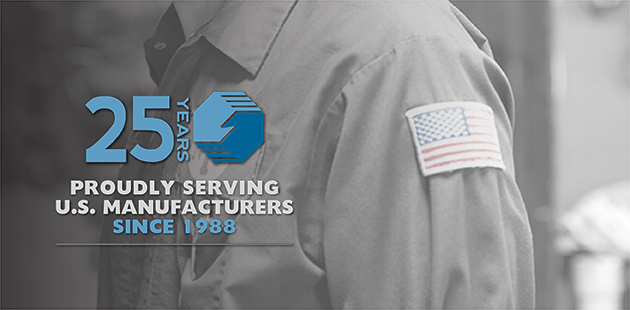Manufacturing Innovation Blog
Powered by the Manufacturing Extension Partnership

This is the story of how and why the Manufacturing Extension Partnership (MEP) was created. It’s the first in a series of tributes to celebrate the upcoming 25th anniversary of a program whose main mission is to improve the competitiveness of small and medium manufacturers in the U.S. The year is 1985. There’s growing concern about a competitive threat to U.S. manufacturers from Japan. Higher quality, lower costs – much of it the result of what’s come to be known as the Toyota Production System. What to do?
– Ursula K. LeGuin
This is the story of how and why the Manufacturing Extension Partnership (MEP) was created. It’s the first in a series of tributes to celebrate the upcoming 25th anniversary of a program whose main mission is to improve the competitiveness of small and medium manufacturers in the U.S.
The year is 1985. There’s growing concern about a competitive threat to U.S. manufacturers from Japan. Higher quality, lower costs – much of it the result of what’s come to be known as the Toyota Production System. What to do?
Connecting NIST and MEP
In 1987 and 1988, Congress passed and President George H. W. Bush signed several pieces of legislation to start to get American companies moving in the right direction. One of those established the Malcolm Baldrige National Quality Award. A second one (Public Law 100-418) renamed the National Bureau of Standards (NBS) as the National Institute of Standards and Technology (NIST) and established what would ultimately collectively become MEP -- the Regional Centers For The Transfer Of Manufacturing Technology Program (MTC) and the Assistance to State Technology Programs (also known as the Boehlert-Rockefeller Technology Program and later the State Technology Extension Program or STEP – and not to be confused with the NIST laboratory program Standard for the Exchange of Product Model Data, part of ISO 10303). Why NIST? Because NIST has significant laboratory programs in advanced manufacturing including the Advanced Manufacturing Research Facility, the Shop of the Nineties and a variety of other programs that would become the Manufacturing Engineering Laboratory, all of which could be sources of technology for the Regional Centers to capture and transfer to U.S. manufacturers.
Evolution of State-based Manufacturing Services
At the same time, there were a number of state-based manufacturing technology extension services including, but not limited to, Georgia Tech’s Industrial Extension Service, Maryland’s Technology Extension Service, Michigan’s Industrial Technology Institute and Modernization Service, New York’s State Industrial Extension Service, North Carolina’s Industrial Extension Service, Ohio’s Technology Transfer Organization, Pennsylvania’s Technical Assistance Program and Industrial Resource Centers and Texas’ Engineering Extension Service at Texas A&M, dedicated to helping manufacturers regain/maintain a competitive edge.
The initial appropriation led to a competition for the first MTCs that garnered 36 proposals and resulted in the creation of the first three Regional Centers: 1. The Great Lakes Manufacturing Technology located at the Cleveland Advanced Manufacturing Program in Cleveland, OH; 2. Northeast Manufacturing Technology Center at Rensselaer Polytechnic Institute in Troy, NY; and 2. Southeast Manufacturing Technology Center at the University of South Carolina in Columbia, SC. With increased appropriations in 1990 and 1992, the program expanded to include four more states: 4. Midwest Manufacturing Technology Center located at the Industrial Technology Institute in Ann Arbor, MI ; 5. Mid-America Manufacturing Technology Center located at the Kansas Technology Enterprise Corporation in Overland Park, KS; 6. Upper Midwest Manufacturing Technology Center located at Minnesota Enterprise in Minneapolis, MN; and 7. California Manufacturing Technology Center located at El Camino Community College, Torrance, CA. All seven still exist in some form today.
STEP’s first awards in 1990 went to nine states – Arkansas, Georgia, Maryland, Massachusetts, Michigan, Minnesota, New York, Pennsylvania and Tennessee. The awards varied in size and were either to demonstrate ways that states could increase the use of federal technology by business within their states to improve industrial competitiveness or help companies in their regions take advantage of services from the Regional Centers. These and the following 31 STEP awards through 1996 frequently were the precursors to successful proposals for MTCs.
A National Network for Manufacturers Takes Off
[rev_slider mfg25test]
Originally, the concept for Regional Centers envisioned somewhere between 10 and 25 regional centers to cover the country. From 1993 to 1995, with the help of the Department of Defense’s Technology Reinvestment Project, the number of extension centers grew to 44. Kudos to the first Regional Centers’ leadership for working with DoD to have NIST manage the $250 million for extension centers and incorporate those centers into a national network. Additional funding from TRP enabled 23 “extension-enabling” projects to provide a common infrastructure and set of tools and training for the national network. Among those projects were the first training courses for field agents and the first common assessment tools. In 1994, the Regional Centers program and STEP were combined into what is now MEP. Direct MEP funding allowed us to create an additional 36 Centers in 1995-96, allowing the system to grow to 70. Later consolidation in New York and Ohio led to today’s 60 MEP Centers in all 50 states and Puerto Rico. It was a huge step to have a national network that can respond to manufacturers’ needs. But, by itself, it’s not enough. The right services need to be delivered by that network.
In part 2, we’ll look at the evolution of the services provided to meet those needs. While Simon Mainwaring’s quote below wasn’t written with MEP in mind, it could easily be adapted to describe what it is we did and still do.
– Simon Mainwaring
About the author
Related Posts
Comments
- Reply


